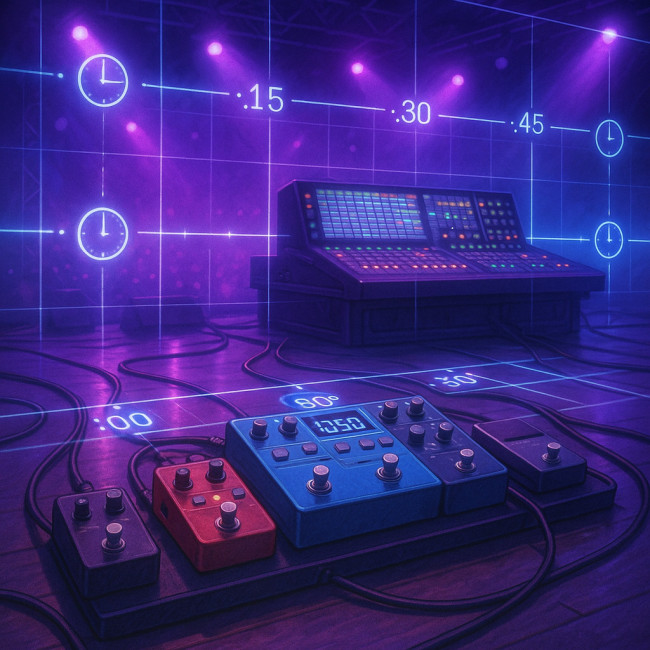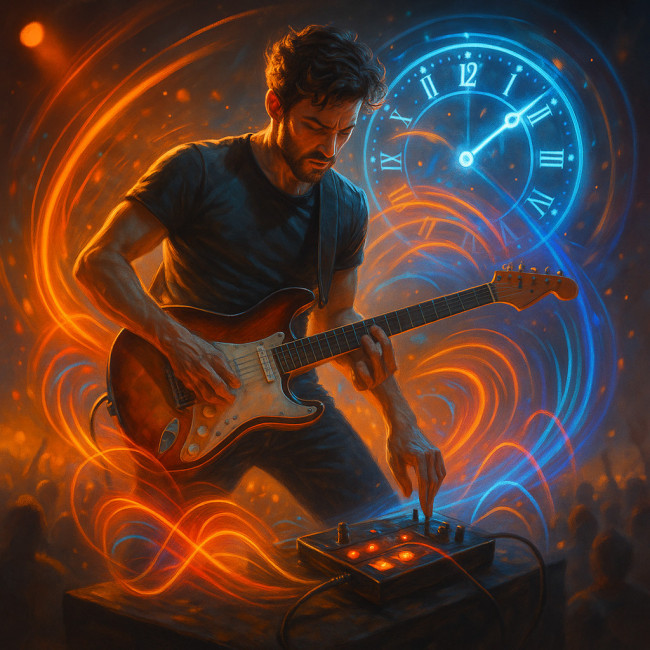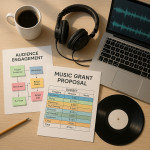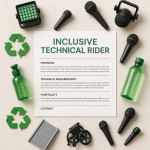Sync your looping rig with venue backlines: latency, clocks and fail-safes
Nothing kills a live loop like a rogue millisecond. Learn how to integrate your personal looping setup with any venue backline, tame latency, pick the right clock source and build bullet-proof fail-safes. By the end, you will walk in, plug in and stay perfectly on grid—no matter whose gear is on stage.
Why your loops must lock to the venue clock

Loopers thrive on repetition. If the first pass drifts even slightly against the venue's digital console or the drummer's in-ear click, every overdub magnifies the error. That is why syncing is not a “nice to have” but mission-critical for artists who rely on live looping to wow audiences and land repeat bookings through professional musician directories.
- Perception threshold: Studies show audiences detect rhythmic misalignment above ≈10 ms. Your entire chain must sit well below this.
- Venue diversity: One night you face a Dante-enabled desk, the next a vintage analogue splitter. Preparing for both scenarios keeps you hirable.
- Creative freedom: When sync is solid you focus on performance, not troubleshooting between songs.
Map your latency budget before sound-check
Latency equals distance in digital audio. Treat every device like a kilometer marker on a road trip: add them up and you know when you arrive (or derail).
Source : RME Latency Table
Identify the usual suspects
- Audio interface round-trip – The biggest slice. Low-buffer, high-quality drivers beat spec-sheet marketing every time.
- Plug-in and pedal chains – A single linear-phase EQ can add 1–4 ms. Keep eye-candy disabled during shows.
- Wireless links – Digital guitar systems average 2–3 ms, but budget IEM packs creep upward. Measure yours.
- MIDI-over-USB – Aggregate devices create hidden buffers. Consolidate routing where possible.
Pick the right master clock: internal, Word Clock or network?
Your looper, digital mixer, and any outboard FX must agree on one tempo and one sample-rate reference. Mismatched clocks equal clicks, pops and drift.
| Scenario | Recommended Master | Why it wins |
|---|---|---|
| Small club, analogue desk | Looper internal clock | Nothing else digital—you stay in charge. |
| Venue with digital console (AES/EBU) | Console Word Clock | House system eliminates SRC at FOH. |
| Festival stage (Dante network) | Dante Master | Automatic election keeps entire network phase-aligned. |
USB audio quirks you must test at home
Some loopers expose only USB Audio Device Class 1 drivers, locked at 48 kHz. If the venue insists on 96 kHz you need an external interface or SRC box. Do a dry run before tour kickoff.
Fail-safes: design your rig for the worst-case scenario
Even if you engineer flawless sync, cables break and software hangs. Fail-safes keep the music moving—and preserve your reputation.
- Dual outputs: Send a parallel dry instrument feed to FOH. If loops crash, the engineer unmutes the lifeline and the audience never notices.
- Foot-switch kill: Program a “panic” pedal that stops all loops and sends a hard MIDI stop to external devices.
- Redundant media: If you trigger backing stems, load them on two samplers. A-B them each night.
- Snapshot backups: Save set-lists to an SD card. If a firmware update nukes presets, reload in seconds.
Monitoring buffers—the hidden safety net
Your IEM mix arrives a few milliseconds earlier than the PA. That is normal physics: sound travels 1 m in ≈3 ms. Keep your monitoring latency below 8 ms so you feel “in the pocket” while the audience hears a phase-aligned mix.
Pre-show checklist you can finish in five minutes
Combine the technical steps above with efficient people skills. You will thank yourself during line-check.
- Confirm sample rate and word clock source with the house engineer.
- Loop a click track and a musical phrase. Verify no flamming against the venue metronome.
- Mute your main outputs and trigger a panic stop—does FOH hear silence?
- Test redundant power supplies; mark breakers you can reach blindfolded.
- Swap to a spare cable on every critical link. Time the swap—it should take under 20 s.
For more stage-proof tactics, skim our sound-check essentials guide and make friends with the crew long before doors open.
Real-world workflow: integrating with house Dante
Many modern venues run a Dante backbone. Follow these steps to avoid packet panic:
- Connect your Dante-enabled interface to the stage switch—never to the FOH switch unless instructed.
- Open Dante Controller and confirm green sync status. If you see “Ext” in red, change Preferred Master to the console.
- Route a stereo send from your looper to FOH plus a mono click to your drummer's IEM bus.
- Label every flow with the song title; engineers love organised patch names.
Need to juggle rehearsal times around the new patch? Our article on flexible rehearsal scheduling shows how to keep the band aligned even when patch rehearsals run long.
Advanced trick: MIDI beat clock over audio network
If your loop station lacks a network card, embed MIDI clock in an unused Dante channel. Software like Bome Network translates clock messages to audio packets, preserving sub-millisecond accuracy across a campus-size venue.
Mini quiz—are you really sync-ready?
FAQ
- Do I need Word Clock hardware for small gigs?
- If the entire signal path is analogue or USB-only, your looper's internal clock is adequate. Word Clock becomes important once multiple digital devices share audio streams.
- Can I rely on Bluetooth MIDI clock on stage?
- No. Bluetooth adds variable latency (10–30 ms) and can drop packets in RF-heavy venues. Use wired MIDI or network-based clock protocols instead.
- What buffer size balances stability and latency?
- At 48 kHz, 64 samples is the sweet spot for most modern laptops. Test 32 samples at home, but have a 64-sample preset ready if CPU spikes under hot stage lights.
- How do I convince venues to share their clock?
- Provide a concise tech rider—see our guide on building an inclusive technical rider. Engineers respect clear documentation and are happier to patch you into their word clock loop.
- What if the looper crashes mid-song?
- Hit your foot-switch kill, let FOH unmute the dry fallback channel, and reboot during the bridge. The audience hears a stripped-down version but stays in tempo.
Lock it in and level up

Syncing a looping rig is part science, part showmanship. When you measure latency, choose the right clock master and build resilient fail-safes, you guarantee a tight performance every night—and you show bookers you are worth a headline slot. Ready to cement that pro reputation? Download the free checklist below and step on stage with total confidence.
Call to action: Grab the “Loop-Ready Stage Checklist” PDF and make flawless sync your new normal.











